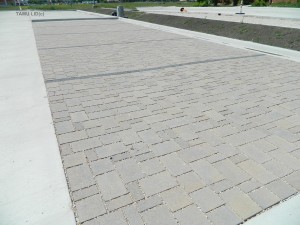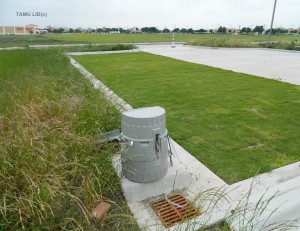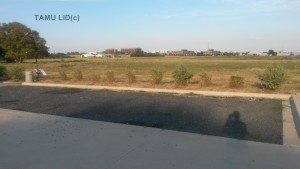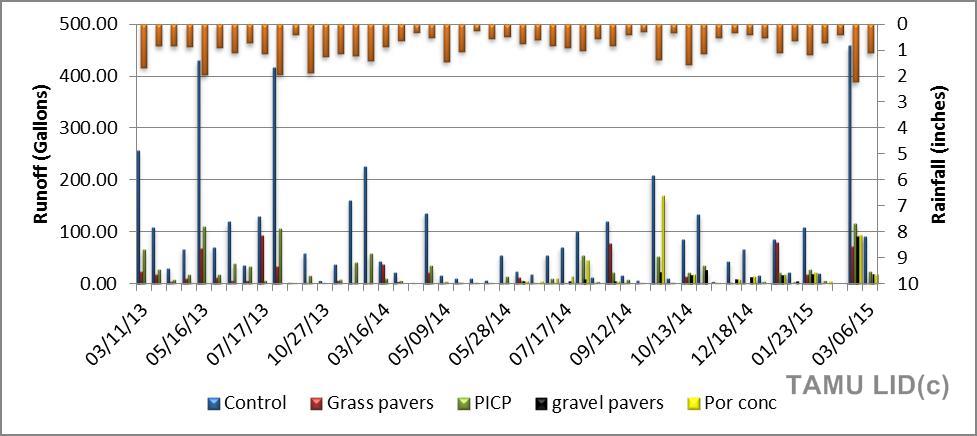Permeable pavements are alternatives to traditional impervious pavement systems. These are comprised of a load bearing, durable surface layer, with additional underlying layers that temporarily store runoff, letting it infiltrate or drain into a controlled outlet. The main mechanism of runoff reduction is infiltration from the top layer, storage within the underlying structure with appropriate flow control. They allow for stormwater runoff reduction and treatment, with slow infiltration into subsoil. They are typically used in low traffic areas, such as parking lots, driveways, fire lanes, and overflow parking areas.
There are several types of permeable pavements, including pervious concrete, pervious asphalt, permeable interlocking concrete pavers, concrete grid pavers and plastic reinforced gravel pavers and grass pavers, and expanded shale reinforced grass pavers (Dietz, 2007; Jaber, 2014). These pavement all have the same general structure, in that they all have a surface layer that is permeable and a gravel layer underneath for storage that also provides structural support. A wide array of studies on permeable pavements in various locations have shown reduction in runoff and associated pollutant loads (Dietz, 2007; Fassman and Blackbourn, 2010; Collins et al, 2008, 2010). A few studies have been conducted to evaluate permeable pavements over clay soils (Dreelin et al, 2006; Fassman and Blackbourn, 2010). However, region specific studies for comparing effectiveness of various types of permeable pavement is required in order to maximize the utility of these stormwater management systems.
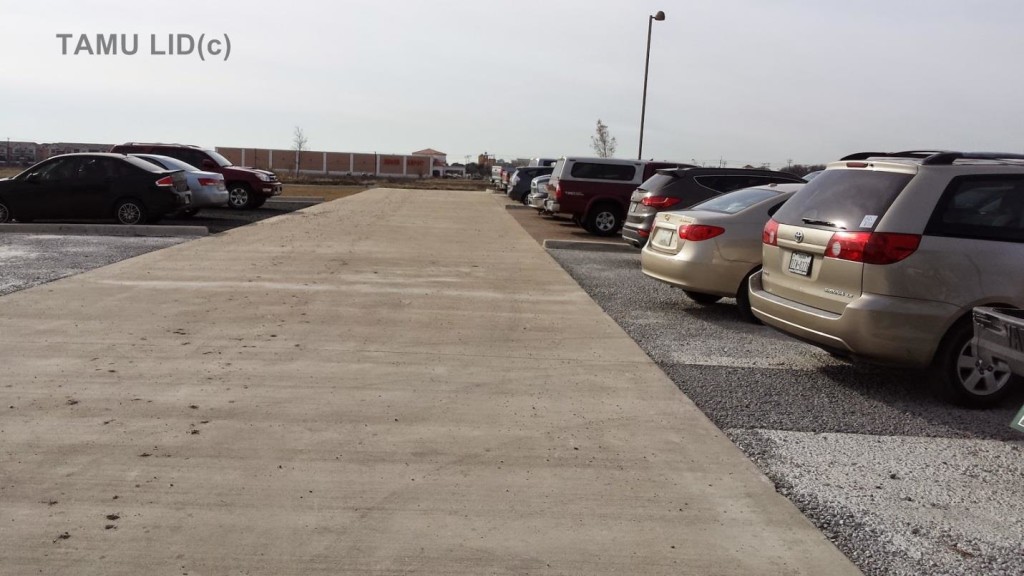
Constructed parking with all five types of permeable pavement hydraulically separated by a concrete wall.
Four different kinds of permeable pavements were constructed and evaluated under this project. These are grass pavers, permeable interlocking block pavers (PIPC), porous concrete, and plastic reinforced gravel pavers. A constructed and functional parking lot serves the Texas AgriLife Center at Dallas incorporates each of these pavements, as well as a section of impervious concrete to serve as control. The five experimental parking lots are below. Please click to enlarge photos.
The volumes for the grass pavers, permeable interlocking concrete blocks (PICP), the gravel pavers and the porous concrete were predicted from the average percent reduction recorded in the measured events. The results show that the average volume reduction for the Grass pavers, PICP, Gravel pavers and the Porous concrete ranged from 73% to 85% and were 85%, 73%, 81% and 79%, respectively, compared to the Control.
There were noticeably higher nitrate nitrogen concentrations in the treatments as compared to the control especially for the gravel pavers. Higher orthophosphate was only seen in grass pavers and to a lesser extent in the gravel paver treatment. TSS was lower in all treatments as compared to the control. E.coli varied among the treatments with randomly one or two high count events for each of the control, Porous pavement, Grass pavers, and PICP probably caused by activity of wildlife around the parking lot before the rain event.
| Control | Grass Pavers | PICP | Gravel Pavers | Porous Concrete | |
| NO3 (mg) | 187.92 | 53.57 | 84.58 | 125.98 | 81.68 |
| Orthophosphate (mg) | 0.60 | 17.16 | 1.03 | 6.86 | 0.24 |
| TSS (mg) | 27736 | 1773 | 3524 | 3825 | 2180 |
| E. Coli (cfu) | 20600 | 10597 | 8842 | 1121 | 18500 |
